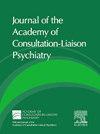外周前庭功能障碍与抑郁症的双向关联:一项纵向随访研究。
IF 2.5
4区 心理学
Q2 PSYCHIATRY
Journal of the Academy of Consultation-Liaison Psychiatry
Pub Date : 2025-09-01
DOI:10.1016/j.jaclp.2025.07.001
引用次数: 0
摘要
目的:越来越多的证据表明外周前庭功能障碍(PVDs)与抑郁症有关。然而,需要进一步的研究来阐明上述疾病之间的时间和因果关系。方法:本研究采用台湾全民健康保险研究数据库1998年1月1日至2013年12月31日的数据进行回顾性队列研究。该研究检查了PVD及其亚型作为抑郁症的原因和后果。我们收集了1998年至2011年间诊断为室性心脏病(N = 87,277)或抑郁症(N = 87,387)的患者及其相应对照(1:2比例)的数据。采用Cox回归模型分别评估既往有室性心律失常或抑郁症的患者发生抑郁症或室性心律失常的可能性。结果:PVDs患者发生抑郁症的风险高出4.29倍(95%可信区间[CI]: 3.93-4.68)。基于PVD亚型的亚组分析显示,所有四种PVD亚型(良性阵发性位置性眩晕、梅尼埃病、前庭神经炎和未指明的PVD)预测抑郁症的风险较高(风险比:3.89-5.18)。同样,抑郁症患者患室性心脏病的风险高出3.29倍(95% CI: 3.05-5.13)。结论:这两项队列研究揭示了pvd与抑郁之间的双向关系。需要进一步的研究来确定这两种疾病是否具有共同的致病机制,以及治疗一种疾病是否能有效降低另一种疾病的发病率。本文章由计算机程序翻译,如有差异,请以英文原文为准。
Bidirectional Association Between Peripheral Vestibular Disorders and Depressive Disorders: A Longitudinal Follow-Up Study
Background
An increasing body of evidence indicates that peripheral vestibular disorders (PVDs) are associated with depressive disorders. However, further investigation is required to elucidate the temporal and causal relationships between the aforementioned disorders.
Objective
To clarify the bidirectional association between peripheral vestibular disorders and depressive disorders.
Methods
The present retrospective cohort study used data from the Taiwan National Health Insurance Research Database for the period from January 1, 1998, to December 31, 2013. The study examined PVD and its subtypes as both the cause and consequence of depressive disorders. We collected data from patients diagnosed with either PVDs (N = 87,277) or depressive disorders (N = 87,387) between 1998 and 2011 and from their corresponding controls (1:2 ratio). Cox regression models were employed to evaluate the likelihood of developing depressive disorders or PVDs in patients with prior PVDs or depressive disorders, respectively.
Results
Patients with PVDs had a 4.29-fold (95% confidence interval: 3.93–4.68) higher risk of developing depression. Subgroup analyses based on PVD subtypes revealed that all 4 PVD subtypes (benign paroxysmal positional vertigo, Meniere's disease, vestibular neuritis, and unspecified PVD) predicted higher risks of depressive disorders (hazard ratio: 3.89–5.18). Similarly, individuals with depressive disorders exhibited a 3.29-fold (95% confidence interval: 3.05–5.13) higher risk of developing PVDs.
Conclusions
The 2 cohort studies revealed a bidirectional relationship between PVDs and depression. Further research is required to establish if these 2 conditions have common pathogenic mechanisms and if treating one effectively reduces the morbidity rate of the other.
求助全文
通过发布文献求助,成功后即可免费获取论文全文。
去求助
来源期刊

Journal of the Academy of Consultation-Liaison Psychiatry
Psychology-Clinical Psychology
CiteScore
5.80
自引率
13.00%
发文量
378
审稿时长
50 days
 求助内容:
求助内容: 应助结果提醒方式:
应助结果提醒方式:


